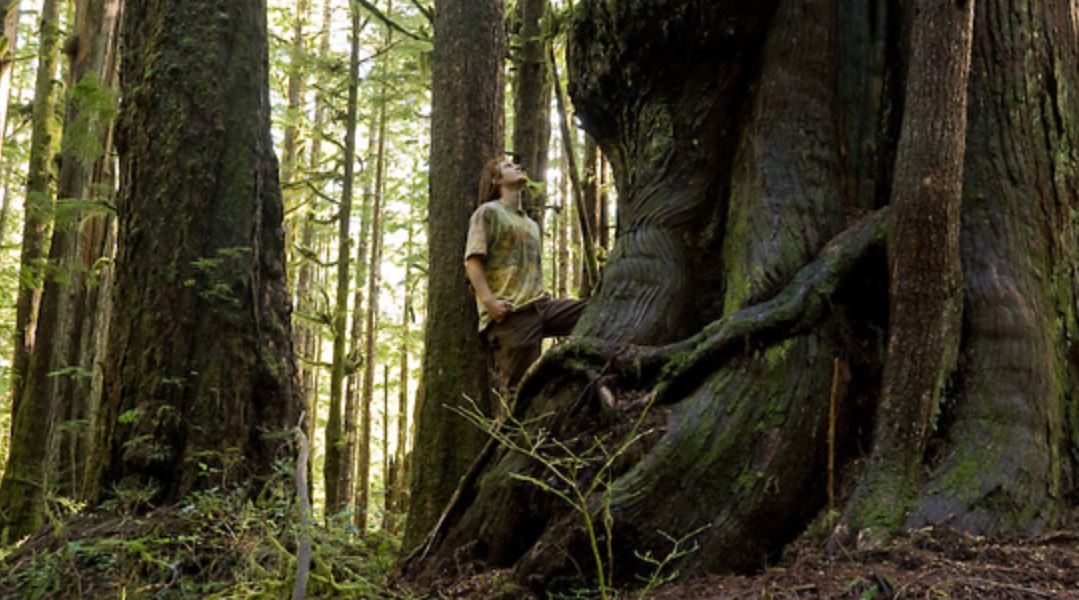A photo of a massive old-growth tree being hauled away on Vancouver Island, taken by Lorna Beecroft of Nanaimo, went viral online and sparked outrage around the world, including Japan, Germany and the United States.
The massive spruce tree was cut down on Vancouver Island, British Columbia sometime between March and mid-August of 2020 – one month before the Special Tree Protection Regulation came into effect on Sept. 11, according to Forests Ministry spokesperson Tyler Hooper, reports the Vancouver Sun.
The ministry says the B.C. government brought in this regulation to protect exceptionally large trees of all species throughout the province, and today, “a tree of this size might well be illegal to harvest under the regulation, and fines of up to $100,000 could be imposed.”
How old do you think that spruce tree was? Ms. Beechcroft put its age into perspective, writing on Facebook: “That tree was already huge when Captain Cook arrived here. We should not ever be cutting down any healthy trees like this. We should be protecting these ancient trees as the national treasures they are. Shame on us. Three bunks filled with only part of this tree. Imagine how majestic it was.”

Image brings old-growth forestry into the light
Old-growth forests around the world face the risk of being cut down to satisfy the construction industry’s need for top-quality wood for high-end and specialty products such as fine furniture, musical instruments, specialty finishing products and shake and shingle manufacturing.
And just so you know, the term “old-growth forests” is not a scientific term. The term originated with the logging industry in the temperate forests of the Pacific-Northwest Coast as a way of prioritizing large trees with the highest dollar value.
And depending on the forestry regulations, a tree is defined as being old-growth by the U.S. Forestry Service if it is over 150-years old, while in British Columbia, the province defines old-growth trees as being more than 250 years old, while forests in B.C.’s Interior are considered old growth if the trees are at least 140 years old, according to CBC Canada.
But the cutting down of these elderly, majestic trees is also a matter of economics, and it is the same, regardless of what country you want to name. In British Columbia, the government argues that logging is a “vital” industry.

Old-growth logging is a matter of economics
In the last fiscal year, the province said $1.3 billion in revenue was linked to the forestry sector, which employs more than 50,000 British Columbians, including 5,300 First Nations people.
The province also points out that old-growth forests can yield as much as 1,500 to 1,800 cubic meters per hectare, according to industry experts. This is a huge difference – compared to second-growth forests – meaning trees that grow after the original trees were cut down or destroyed by natural disturbances like wildfires.
Second-growth forests yield around a third of the value of old-growth forests because they are harvested at younger ages. Abd the provincial government also points out that on Vancouver Island, more old-growth trees are harvested because the second-growth trees are still too young to be logged.
Let’s put this in perspective. Each year, 200,000 hectares (494,211 acres) of forested lands in B.C. are logged. The province says 27 percent of this annual harvest comes from old growth.
Provincial forestry minister Katrine Conroy, speaking in April at a convention for the BC Council of Forest Industries, wouldn’t say how old-growth would factor into the future of the sector. However, she did say, “B.C.’s forest industry is, and will continue to, provide opportunities and benefits for British Columbians for decades to come.”














